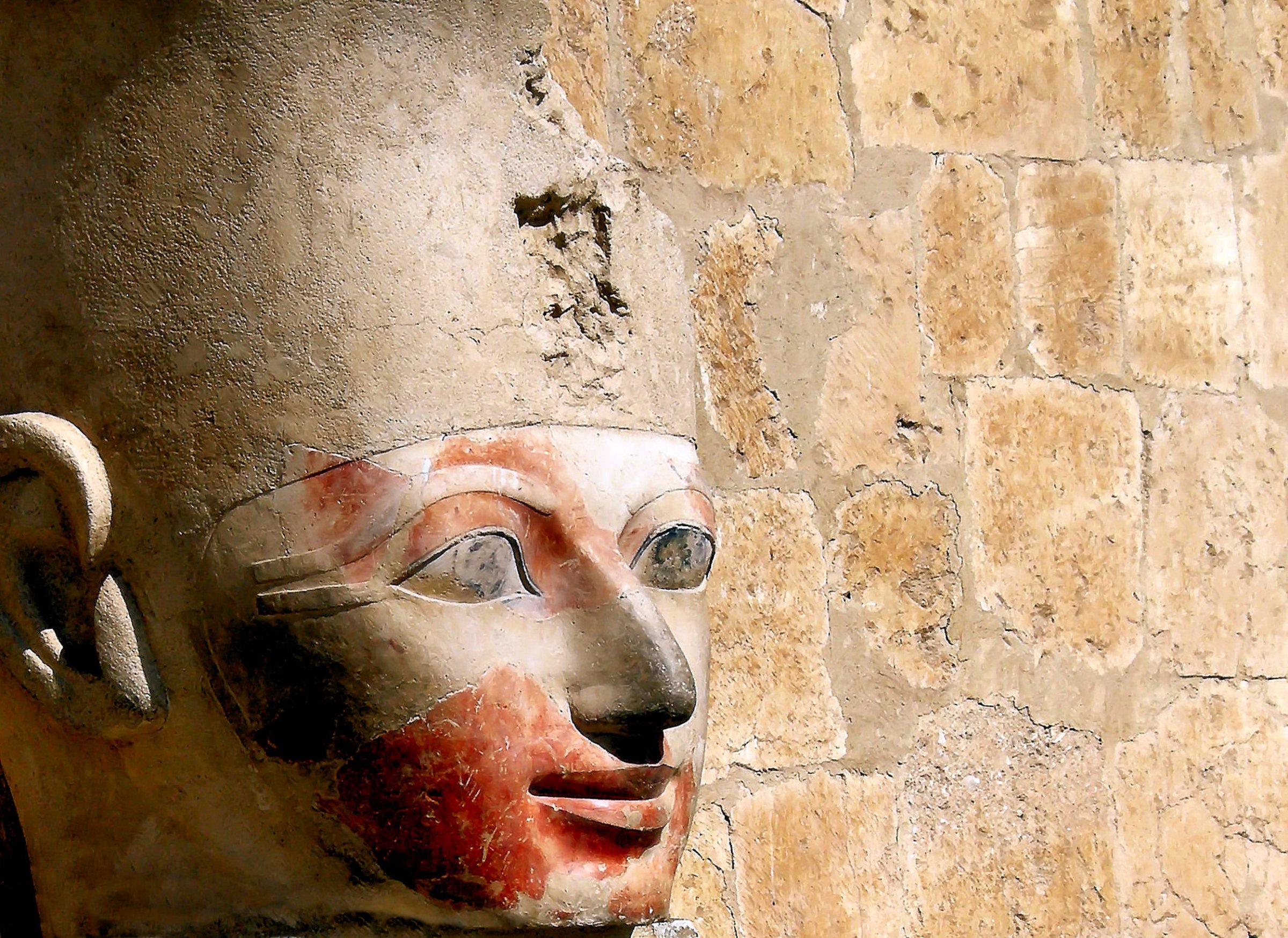
This November, nearly 200 women ran for Congress. Most didn’t win. Of the 535 representatives and senators currently serving, only 99 — 18.5 percent — are women. Why are there so few women in positions of power in this modern age?
One way to answer that question is through the story of the greatest woman ever to rule in the ancient world — an Egyptian pharaoh.
In Egypt in the 15th century B.C., women were considered sexual companions and the carriers of men’s seed—not rulers. But Hatshepsut found her way to the throne of the richest and most powerful state in the ancient world. Then, a mere 25 years after her death, ruling elites had her statues smashed into bits.
I wrote my book about Hatshepsut, The Woman Who Would Be King, after the birth of my son. Motherhood made me realize, as I never had before, how trapped women are by our bodies. Hatshepsut must have felt the same kind of entrapment after she gave birth to the child of her half-brother, the king, while still in her early teens. That child was a girl, not the son for whom her people had hoped. But Hatshepsut’s lack of a son laid the foundation for the rest of her strange, charmed life.
Hatshepsut’s husband passed away after only three years of rule, when Hatshepsut was very young, perhaps 16. At the time, the next in line to be king of Egypt was a mere infant—not her own baby, but a baby belonging to one of her husband’s second-class wives.
Hatshepsut had the power to fill this vacuum. Her bloodline was impeccable, back to kings of the earlier 18th Dynasty. She had an education, likely begun in early childhood. Not only was she the highest-ranking royal wife, but also she was Egypt’s most powerful priestess.
Hatshepsut made sure the young king — that infant son of a lesser wife — was educated, brought up in the temple mysteries, and trained in the military arts. But since he was so small, Hatshepsut took charge.
So it was Hatshepsut who gave the vizier — the king’s second-in-command — orders about trading ventures to the land of Punt, who discussed treasury matters with her royal steward, and who put down insurrections in Kerma (in modern-day Sudan). She personally oversaw the collection of the spoils of war, according to a tomb inscription written by her overseer of the treasury.
Then, for reasons that were not recorded, Hatshepsut was given — or decided she needed — more. When the young King Thutmose III was just 8 or 9, Hatshepsut was crowned king alongside him, with the full support of her courtiers, Egypt’s elite families, and its powerful temple priesthoods. Hatshepsut became a king — because ancient Egypt had no word for a female ruler.
She won this prize because she was the most able person for the job. Hatshepsut also built a strong cohort of supporters — men whose continued prosperity depended on her power.
When Thutmose III was approaching his 16th year, she tried another strategy to retain power. In statuary, in reliefs, maybe even in rituals before her elites and populace — she took on the appearance of a man. She bound her breasts; she wore a masculine kilt; she tied on the long beard of kings. She was ostensibly past childbearing years, which meant that she would never bear her own heir to the throne, and her co-king was quickly becoming a man. She had to stay ahead of him.
Historians have given many explanations for Hatshepsut’s power plays — an unreasonable greed and lust for influence being chief among them. But she actually helped Thutmose III’s position by keeping him by her side. Thutmose III accompanied her on campaigns to Kush, presumably participating in the battles, the dispatch of enemies and the taking of spoils. The investment paid off: Thutmose III became the greatest warrior king Egypt had ever seen.
The history of her reign became troublesome as Thutmose III was grooming his chosen son to be next in line. The possibility of another woman taking the throne was a complication he decided to erase. So down went the statues and the first layer of the temple reliefs.
We’ve come a long way since the 15th century B.C., but what’s interesting is how much remains the same.
Kara Cooney is associate professor of Egyptian art and architecture at the University of California at Los Angeles. She wrote this for Zocalo Public Square.
More Must-Reads from TIME
- Donald Trump Is TIME's 2024 Person of the Year
- Why We Chose Trump as Person of the Year
- Is Intermittent Fasting Good or Bad for You?
- The 100 Must-Read Books of 2024
- The 20 Best Christmas TV Episodes
- Column: If Optimism Feels Ridiculous Now, Try Hope
- The Future of Climate Action Is Trade Policy
- Merle Bombardieri Is Helping People Make the Baby Decision
Contact us at letters@time.com